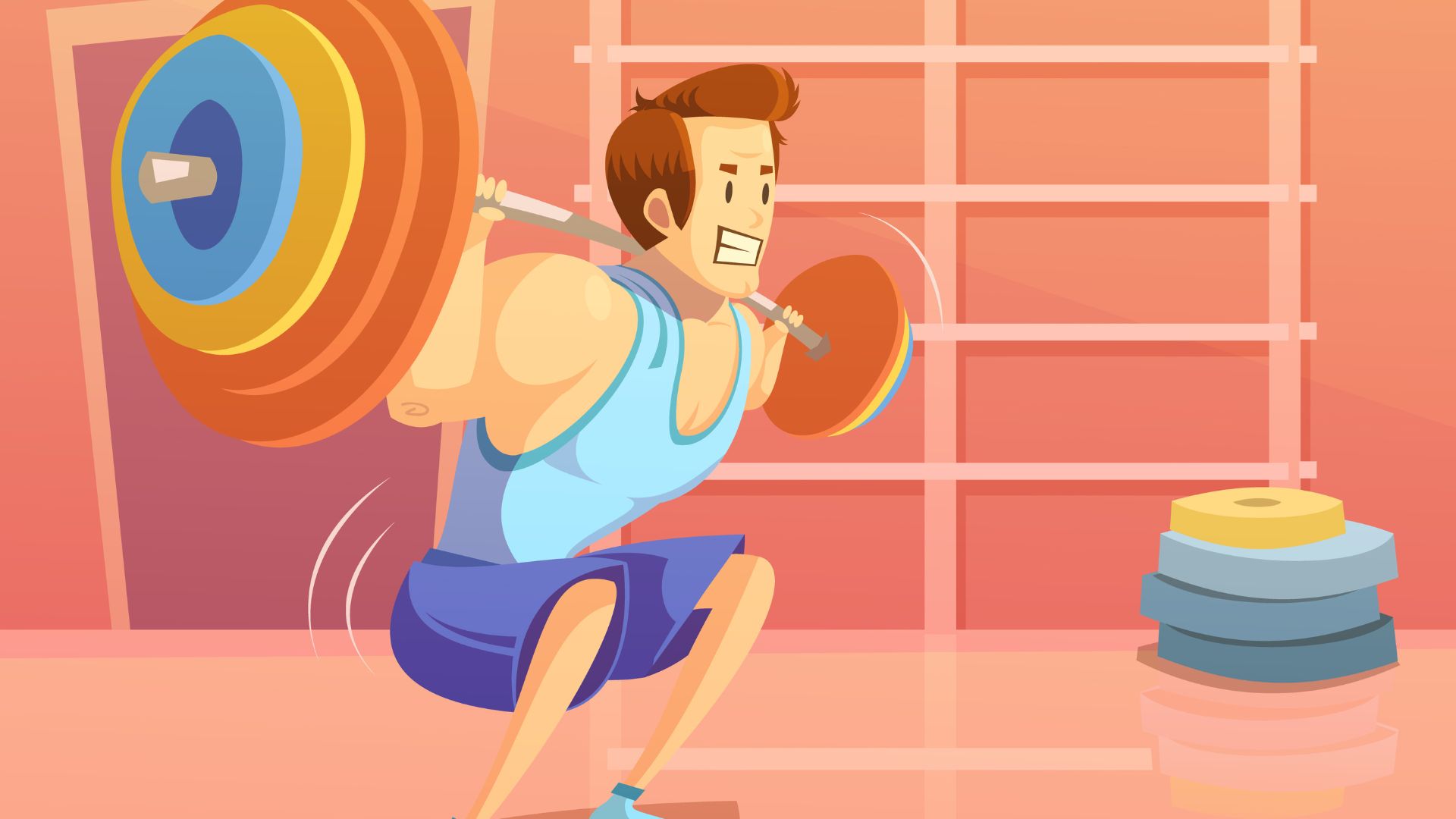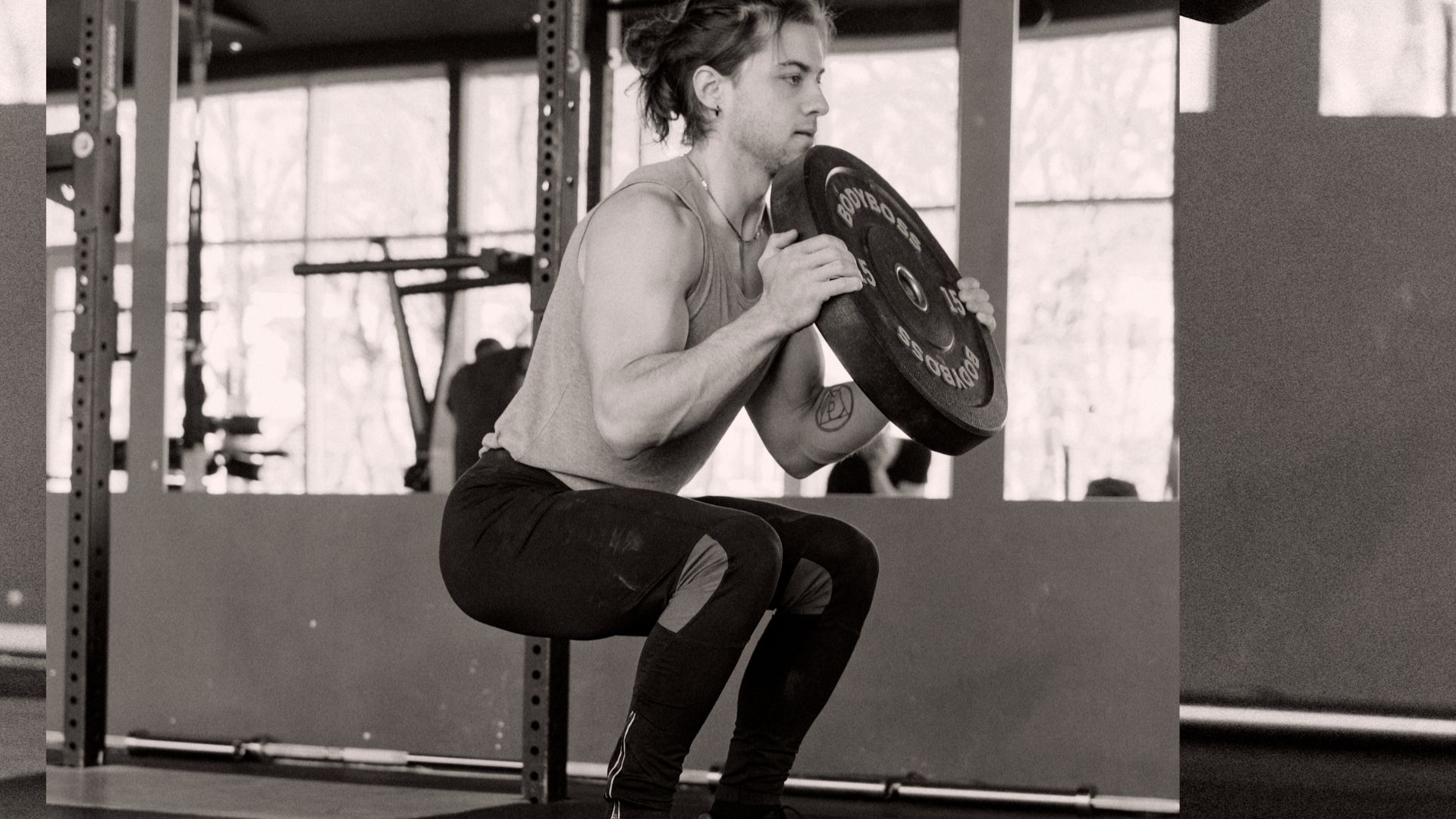Are you a 23-year-old looking to start squatting? Are you wondering how much weight you should be able to squat at this age? Well, you’ve come to the right place.
Squats are one of the most popular exercises for building lower body strength, and it’s important to know your limits and how much you should be able to lift. In this article, we’ll explore how much you should be able to squat if you’re 23 years old and provide tips on how to increase your squat weight.
The appropriate weight to squat at 23 years old depends on various factors such as fitness level, training experience, and health status. For beginners, it is recommended to start with a weight that is comfortable enough to maintain proper form while performing the exercise.
As you get more comfortable, you can gradually increase the weight. Generally, aim for a weight that is about 60-70% of your one-rep maximum (1RM). To determine your 1RM, perform a test where you increase the weight until you can only complete one repetition with proper form. It is essential to exercise caution when lifting heavy weights such as squats and work under the guidance of a qualified trainer to prevent injuries.
Your fitness level and overall health.
When it comes to squatting weight, there are several factors to consider. Your fitness level, training experience, and overall health will all play a role in determining how much weight you should squat.
For example, if you are new to weightlifting or have not exercised regularly in the past, it is important to start with a weight that is comfortable and allows you to perform the exercise with proper form. This may mean using just your body weight or a light barbell to start.
As you become more comfortable with the exercise and your body adapts to the movements, you can gradually increase the weight. This will help you build strength and endurance over time.
It is important to note that performing heavy weightlifting exercises such as squats should be done with caution.
Squats can be a very effective exercise, but they can also put a lot of stress on your joints and lower back if not done properly.
It is important to use proper form and technique when performing squats to minimize the risk of injury.
If you are unsure about how much weight you should be squatting or how to perform the exercise with proper form, it is always a good idea to work with a qualified trainer or coach.
They can help you develop a safe and effective squatting routine that is tailored to your individual needs and goals.
Here is a tabular summary on how to gradually increase the weight when performing squats, while keeping in mind the importance of proper form and technique to minimize the risk of injury:
| Step | Description |
|---|---|
| Step 1 | Start with bodyweight squats to get comfortable with the exercise and practice proper form and technique. |
| Step 2 | Gradually add weight by using a barbell or dumbbells. Start with a weight that you can comfortably lift for 8-12 repetitions. |
| Step 3 | Increase the weight by 5-10% each week to continue challenging your muscles. |
| Step 4 | As you progress, increase the weight and decrease the number of repetitions per set. For example, you can aim for 3-5 repetitions with heavier weights. |
| Step 5 | Take breaks between sets and listen to your body. If you feel any pain or discomfort, stop the exercise and consult a professional. |
| Step 6 | Consider working with a personal trainer or fitness professional to ensure proper form and technique when performing squats. |
Remember, it’s better to start with a weight that’s too light than too heavy to avoid injury and build strength gradually over time.

Perform a test.
Determining your one-rep maximum (1RM) is a way to gauge your maximum strength in a particular exercise, such as the squat.
To determine your 1RM in squats, you would start with a weight that you can comfortably lift for multiple reps and gradually increase the weight until you can only complete one repetition with proper form.
This test should be performed with caution because lifting heavy weights can put a lot of stress on your body, particularly on your joints and lower back. If you are not familiar with proper lifting techniques and form, you may be at risk for injury.
That’s why it’s important to perform heavy weightlifting exercises such as squats under the guidance of a qualified trainer or coach.
They can ensure that you are using proper form and technique, which will minimize your risk of injury.
Additionally, a trainer or coach can help you develop a safe and effective squatting routine that is tailored to your individual needs and goals.
They can also provide feedback and support as you progress and help you make adjustments as needed to continue making progress towards your fitness goals.
Determining your 1RM in squats and performing heavy weightlifting exercises such as squats should be done with caution and under the guidance of a qualified professional.
This will help ensure that you stay safe and avoid injury while making progress towards your fitness goals.
Here is a tabular summary on determining your 1RM in squats and performing heavy weightlifting exercises such as squats with caution under the guidance of a qualified professional:
| Step | Description | Importance |
|---|---|---|
| Step 1 | Warm up properly before attempting to determine your 1RM. This can help reduce the risk of injury and ensure accurate results. | Important |
| Step 2 | Start with a weight that you can comfortably lift for 8-12 repetitions and gradually increase the weight. Rest between each set to recover. | Important |
| Step 3 | As you get closer to your estimated maximum weight, decrease the number of repetitions per set. | Important |
| Step 4 | Determine your 1RM by attempting to lift the heaviest weight you can for one repetition with proper form and technique. | Important |
| Step 5 | When performing heavy weightlifting exercises such as squats, use proper form and technique to reduce the risk of injury. | Critical |
| Step 6 | Consider working with a qualified professional, such as a personal trainer or strength coach, to ensure proper form and technique and to receive guidance on weight selection and programming. | Critical |
| Step 7 | Listen to your body and avoid pushing yourself too hard. If you experience pain or discomfort, stop the exercise and seek medical advice. | Important |
Determining your 1RM in squats can be helpful in developing a strength training program, but it should be done with caution and under the guidance of a qualified professional to avoid injury.
Proper form and technique when performing heavy weightlifting exercises such as squats are critical to reducing the risk of injury and maximizing the benefits of the exercise.
Final thoughts
the amount of weight you should squat will depend on individual factors such as your fitness level, training experience, and overall health.
Therefore, it is important to start with a weight that is comfortable and allows you to perform the exercise with proper form.
As you become more comfortable with the exercise, you can gradually increase the weight over time.
This progression should be done gradually and under the guidance of a qualified trainer or coach to ensure that you are using proper form and technique.
In addition to increasing the weight, you can also adjust other variables such as the number of sets and reps, the tempo of the movement, and the rest periods between sets.
These variables can be adjusted to help you continue to make progress towards your fitness goals.
The key is to start with a weight that is comfortable and progress gradually over time with proper form and guidance.
This will help you build strength and endurance safely and effectively, while minimizing the risk of injury.
Here’s a tabular summary of the information we’ve discussed:
| Topic | Information |
|---|---|
| Weight selection | Start with a weight that is comfortable and allows you to perform the exercise with proper form |
| Individual factors | The amount of weight you should squat will vary based on individual factors such as your fitness level, training experience, and overall health |
| Progression | Gradually increase the weight over time, while continuing to use proper form and technique |
| 1RM | Determine your one-rep maximum (1RM) by gradually increasing the weight until you can only complete one repetition with proper form, but do so with caution and under the guidance of a qualified trainer or coach |
| Other variables | Adjust other variables such as the number of sets and reps, the tempo of the movement, and the rest periods between sets to help you continue to make progress towards your fitness goals |
Conclusion.
In conclusion, squatting is a great exercise for building lower body strength and endurance. However, the amount of weight you should squat will vary based on individual factors such as your fitness level, training experience, and overall health.
It is important to start with a weight that is comfortable and allows you to perform the exercise with proper form.
As you become more comfortable with the exercise, you can gradually increase the weight over time, while continuing to use proper form and technique.
To determine your one-rep maximum (1RM), you can perform a test where you gradually increase the weight until you can only complete one repetition with proper form.
However, this should be done with caution and under the guidance of a qualified trainer or coach to minimize the risk of injury.
In addition to increasing the weight, you can also adjust other variables such as the number of sets and reps, the tempo of the movement, and the rest periods between sets to help you continue to make progress towards your fitness goals.
Overall, the key is to start with a weight that is comfortable and progress gradually over time with proper form and guidance. This will help you build lower body strength and endurance safely and effectively, while minimizing the risk of injury.

Hey there, it’s Mike Rrsq, the Editor-in-Chief over at Jsquat.com, and I’m absolutely obsessed with all things squat fitness! I’ve been lucky enough to get some serious recognition for my work in this field. With a solid background in the fitness and wellness industry, I’ve been there right from the get-go, helping shape this website into what it is today.
You see, I’m not just the boss around here; I’m also a passionate contributor. I love sharing my insights through my articles, and trust me, they’re not your run-of-the-mill stuff. Each piece I write is a labor of love, filled with my expertise and real-world experience in the fitness universe. So, if you’re into fitness and looking for some inspiration, you’re in the right place!

